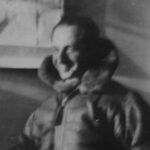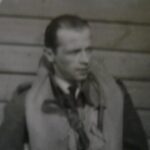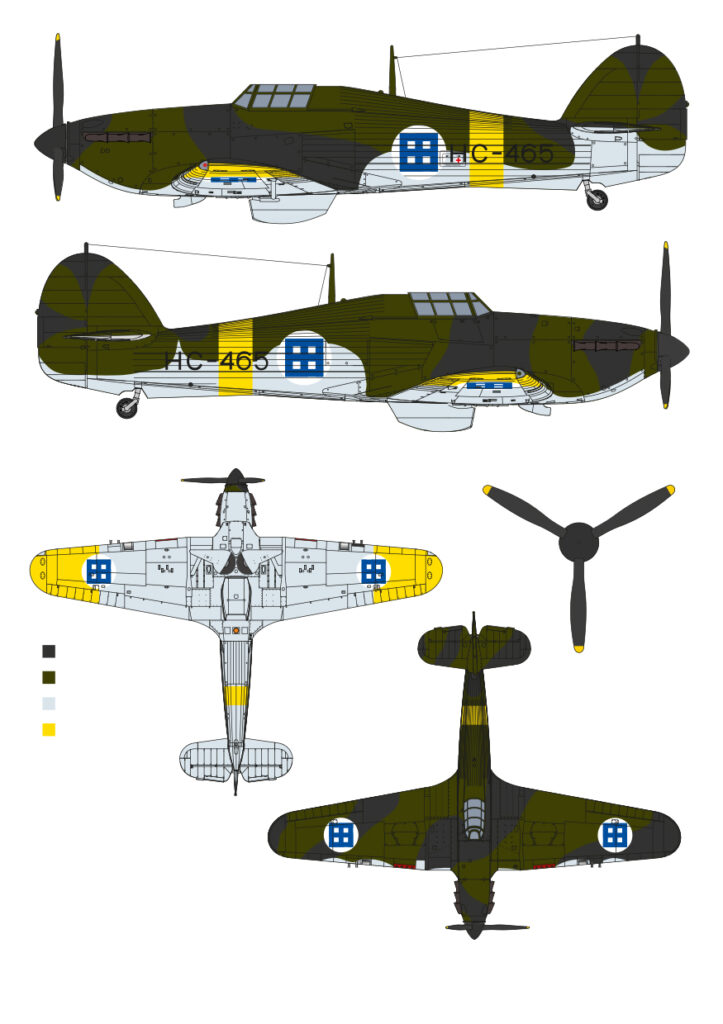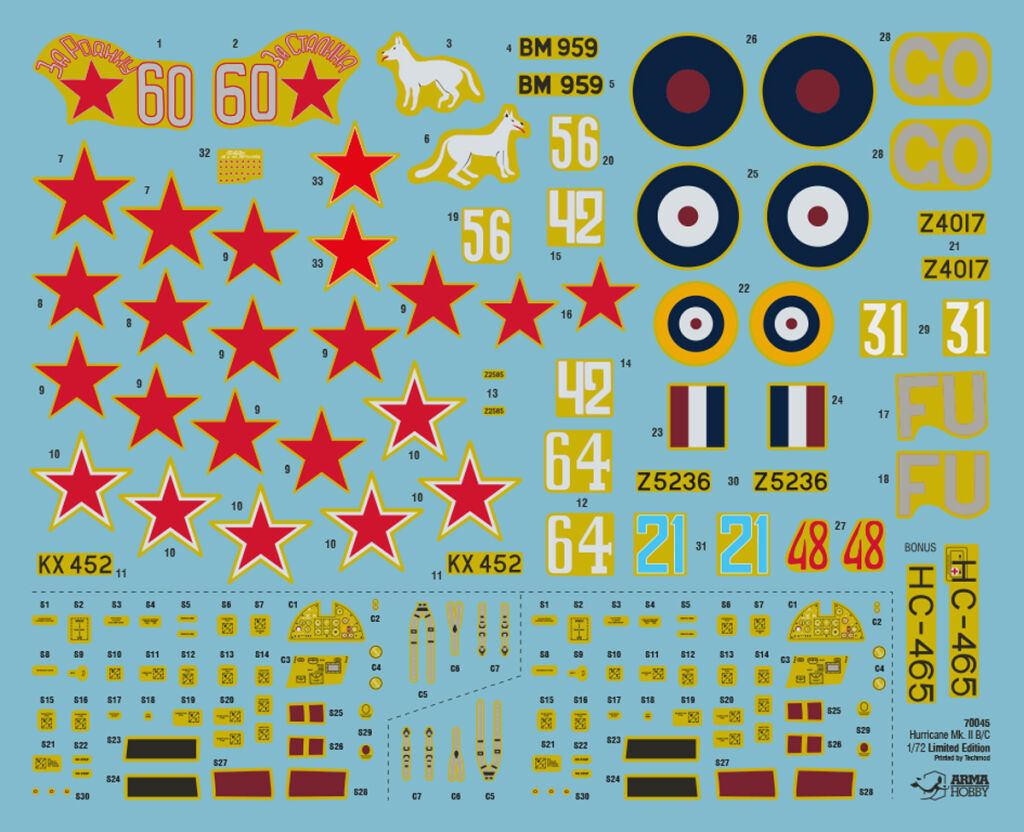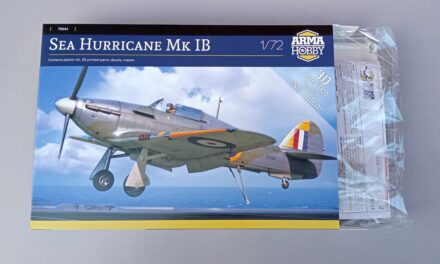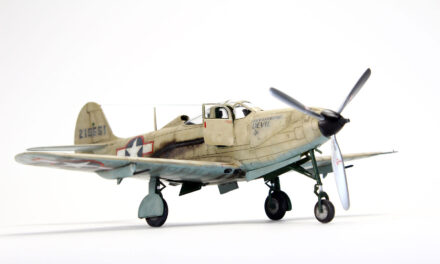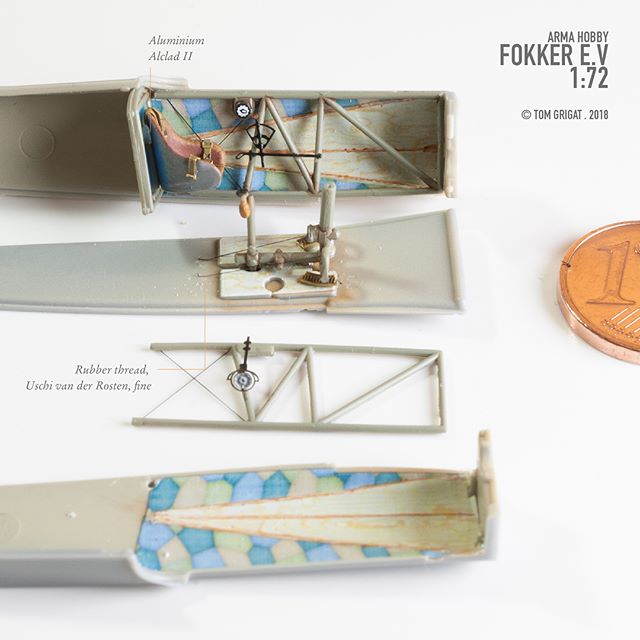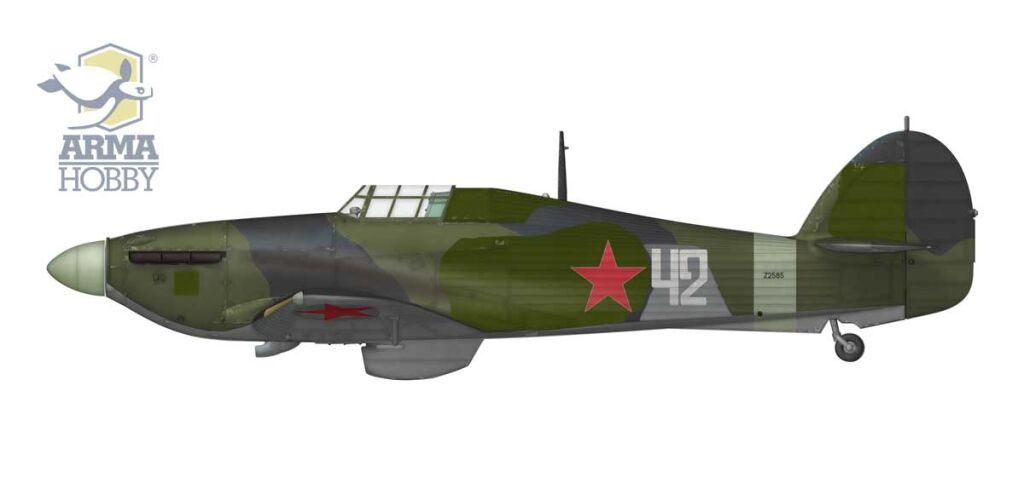
At first glance, Hurricane Mk IIa Z2585 does not stand out particularly from the seven different paint schemes available in the new “Eastern Front” kit. What makes it utterly unique is only revealed upon a closer inspection of the aircraft’s history. For apart from Z2585, how many fighters distinguished themselves by serving with four (!) different Air Forces during the war? A remarkable achievement, indeed, but by no means the only fact that makes this aircraft most interesting.
For England!

Z2585 was built at Hawker’s mother factory in Kingston in February 1941, and towards the end of the month was sent to No. 56 Squadron RAF stationed at North Weald. The fighter was first mentioned in the documents of the unit’s A Flight on 25 February 1941, when Sgt Peter Robinson took it on a flyby. The first weeks of service were filled with training flights, patrols as convoy cover, and “X-Raids” – flights to intercept radar-detected, unrecognized aircraft. On 16 April, Sgt George Hoyle, flying on Z2585, and P/O Thomas Guest, on Z2405, intercepted and shot up a Bf 110 during an X-Raid. Having expended their ammunition, they began to observe the German aircraft, which was now flying low over the water and billowing white smoke from both engines. However, they did not see it crash into the sea, and so only reported a “probable” kill.
New Uniforms
What is most interesting from a model-maker’s point of view, as it allows us to recreate the appearance of Z2585, began the following month, when No. 56 Squadron RAF commenced trials with a new camouflage that was more suited to offensive tasks. Yes, our Z2585 was also unique because of its non-standard colour set, which was the result of experiments conducted by the Air Fighting Development Unit (AFDU) at Duxford. We will describe the details of these tests and their results in another article, which will be published soon.
For Our Freedom and Yours!
In the last decade of June 1941, the aircraft, still wearing an experimental paint scheme, was transferred to No. 316 (Polish) Squadron RAF, where it was assigned the code letters SZ-X. One of the more important actions in which it participated was Operation Sunrise, launched on 24 July 1941 with the objective of eliminating the battleship “Gneisenau” and cruiser “Prinz Eugen”, both located in Brest, and the battleship “Scharnhorst”, which was in the harbour of La Pallice on the west coast of France. The Polish pilots, who flew out to meet the Hampden bombers of Nos 44 and 144 Squadrons RAF returning from Brest, most probably clashed with Ergänzungsgruppe JG53, which lost one Bf 109E-7. The victory was credited to S/Ldr Julius Frey and F/O Aleksander Gabszewicz, while the latter also reported damaging a second German fighter. Also involved in the battle was Z2585, piloted by Sgt Paweł Gallus. The Polish fighter pilots broke up the Messerschmitt attacks, and the Hampdens reached England without loss.
Polish pilots of No. 316 Squadron, who flew Hurricane Z2585: F/Lt Józef Wincenty Dec; Sgt, pilot, Paweł Piotr Gallus; F/Lt Władysław Kiedrzyński; F/Lt Marian Szalewicz/photos via Grzegorz Śliżewski and Piotr Sikora
This one major engagement notwithstanding, combat activities consisted mainly in convoy cover, patrols, and barely a few operations over northern France, which, however, did not result in any dogfights. The squadron was based at Church Stanton in South West England, where the chances of encountering the enemy in the air were relatively low. In the second half of 1941, units armed with the Hurricane no longer took such an active part in the aerial offensive. In August, the Luftwaffe began to introduce the Fw 190A, for which the Hurricane was no match. Accordingly, fighters of the type were redeployed for other tasks – mainly for nocturnal defence and, following the installation of bomb launchers, attacking ground targets. At the same time, hundreds of Hurricanes were sent to the USSR under the Lend-Lease agreement, concluded in July 1941. Z2585’s service with the Polish Air Forces in Great Britain came to an end on 10 October 1941. A few days later, No. 316 Squadron RAF received its first Spitfires, and after two weeks there were no Hurricanes remaining in its ranks.
For the Motherland! For Stalin!
Our Z2585 was packed into crates and, in December 1941, set sail on a convoy to Murmansk to serve a third consecutive Air Force. Even before it was shipped, all the markings were painted over with standard British colours, however a much lighter Ocean Grey was used instead of the experimental dark grey.

Finnish soldiers at Z2585 before plane dismantling. Photo via Carl-Fredrik Geust
The appearance of Z2585 – a rather unusually painted Hurricane – has been the subject of several different interpretations, and models of the aircraft can be found in various colour combinations – including some which are completely impossible. We have the advantage of basing our interpretation not only on photographs, but also on an understanding of the monochrome image through an in-depth analysis of the aeroplane’s history, including its participation in camouflage tests conducted by No. 56 Squadron RAF in the spring and summer of 1941, which resulted in the introduction of a new paint scheme for day fighters, known as the “Day Fighter Scheme”, in August 1941.

The colour illustration shows Z2585 when it was in service with the VVS in February 1942; at the time, the fighter wore essentially the same camouflage as it had while in service in Great Britain (with No. 316 (Polish) Squadron RAF), however this was neither the Temperate Land Scheme nor the Day Fighter Scheme, although it was similar to the latter. The distinction lies in the use of a different dark-grey colour that remained on the aircraft from the camouflage testing days, characterized by a very poor contrast with the other camouflage colour, namely, Dark Green. The second major difference consists in the use of a simplified paint scheme – a feature typical of aeroplanes which participated in camouflage tests, with a distribution of camouflage patches distinctly dissimilar from that applied at the factory.
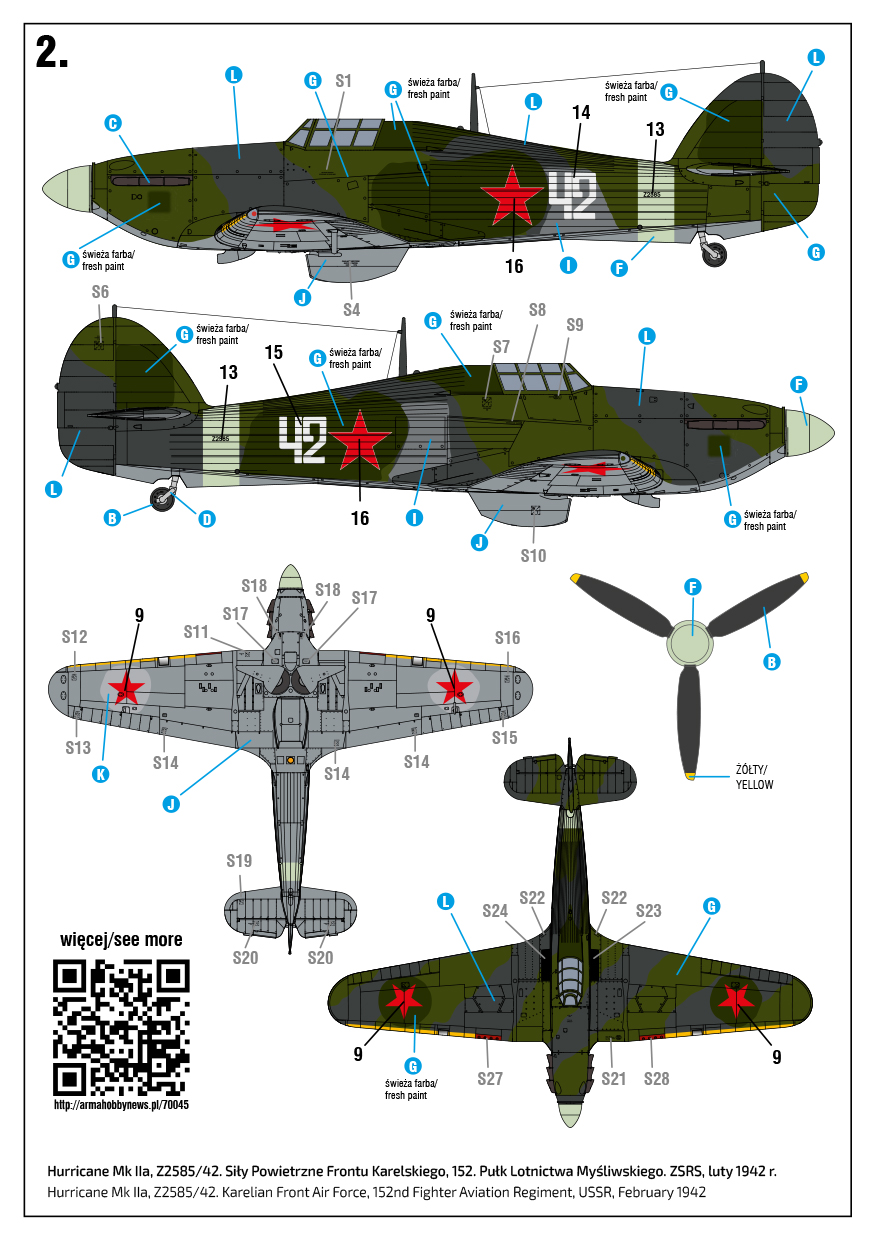
This dark-grey neutral colour could have been a mix made just for the tests, but equally it could have been the Fleet Air Arm’s Extra Dark Sea Grey – also used during testing – and such is the suggestion provided in our painting instructions. Unfortunately, there is no possibility of verifying this with absolute certainty. Regulation Ocean Grey was only used to paint over the code letters “X” with which the fighter had been marked while serving with No. 316 (Polish) Squadron RAF; these are the two lighter patches on the sides of the fuselage. The rest of the markings, including the emblem of the Polish unit behind the cockpit and the red and white checkerboard on the engine side panel, were painted Dark Green. In the photographs, darker patches of fresh paint can be seen at these points.
Its career in the ranks of the VVS (Voenno-Vozdushnye Sily) was not long, and the details are little known. The documentation of the various VVS units does not contain data such as serial or tactical numbers, which would allow us to identify the aircraft. Furthermore, the names of the pilots who flew individual aircraft were given only if they were involved in any incidents. Thus, we will not learn how Z2585’s service progressed; all that can be determined is that the fighter, now numbered “42”, was assigned to the 152nd Fighter Aviation Regiment (IAP) stationed at Segezha in Karelia, which operated the Hurricane type from November 1941. Only the circumstances of its final flight are known more precisely.
Namely, on 4 February 1942, the 152nd Fighter Aviation Regiment (IAP) sent three Hurricanes to reconnoitre enemy troop movements in the direction of Ukhta (Finnish: Kalevala). Z2585 was piloted by the Ukrainian-born Lieutenant Feodosiy Grigoryevich Zadorozhny, a 1937 graduate of the Kharkiv Aviation School. Two pilots returned to base and reported that Zadorozhny had made a forced landing on the frozen surface of Topoziero Lake (Finnish: Tuoppajärvi) near its south-eastern shore. They then saw Zadorozhny getting out of the cabin. There is no mention in the flight log that the flight was interrupted by enemy action. The aircraft in all probability experienced an engine failure. Lieutenant Zadorozhny returned home on foot, traversing the Karelian wilderness.

Z2585 on its belly where it force-landed on 4 February 1942. Photo SA-kuva
And so Z2585’s service in the homeland of the global proletariat came to an end.
The later fate of its last Soviet pilot was tragic. Already on 13 February 1942 he made another forced landing, after being shot down by a Brewster Buffalo from 2/LeLv 24, while on 22 June 1942, by then promoted to the rank of Senior Lieutenant and holding the position of deputy commander of the 152nd Fighter Aviation Regiment (IAP), Zadorozhny failed to return from a reconnaissance.

Crew of 3 Kenttälentovarikko (3. Field Aviation Station) with Z2585 prepared for transport. Photo: via Carl-Fredrik Geust
Hakka päälle!
It was not until 16 February that news of a Soviet Hurricane found near Lake Topoziero reached the 3 Kenttälentovarikko (3rd Field Air Station), which was tasked, among others, with evacuating aircraft that had crash-landed.
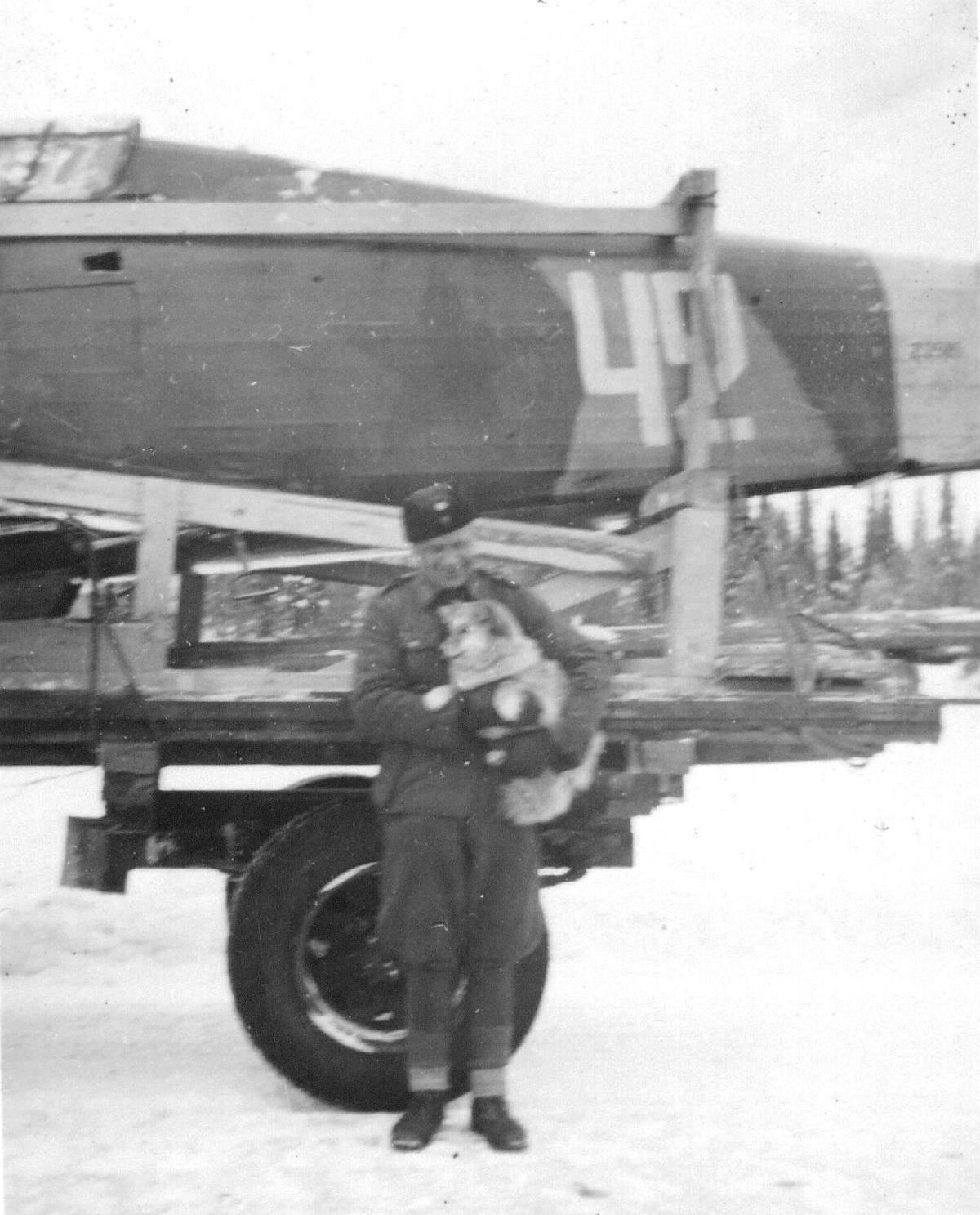
The Finns dug the fighter out of the snow and photographed it comprehensively, after which it was dismantled and put in storage for quite some time; in fact, repair work was completed only in the autumn of 1943. Its restoration to flying condition required the use of parts taken from other aeroplanes. Z2585, now reborn as HC-465 and repainted once again, received the wings of Mk IIB Z3577, and various parts from BM959. The donor of the metal de Havilland propeller was a Finnish Mk I. In April 1944, HC-465 was assigned to HLeLv 34, where it was used as a target tug and never once saw combat.

Z2585/HC-465 as a target tug. When interpreting this photo, there remains uncertainty regarding the painting of the spinner. No Hurricane Mk I serving at Ilmavoimat had a yellow spinner, only a rather wide band on the fuselage nose. Other authors suggest that the spinner and the narrow band visible in the photo of the HC-465, also covering the undersurface, were painted with camouflage colours. Unfortunately, we did not find a photo that would clearly confirm this. We concluded that the plane had a complete set of quick recognition elements and both the spinner and the front of the fuselage in front of the exhaust tubes were painted yellow, which cannot be distinguished from black or green in orthochromatic photos. Photo via Carl-Fredrik Geust
Two optional marking variants of the Hurricane HC-465
After no more than a few weeks, on 31 May 1944, it made its final flight. Later still, in June of the same year, it was passed on to HLeLv 28, however no details of its service are available other than that it was put into storage already in the beginning of July, and permanently removed from service in October. While operated by its fourth and final user, the fighter logged a scant 18 hours and 40 minutes of flying time. The lengthy and convoluted career of the protagonist of our story finally came to an end. It is interesting to note that in 2014, a surviving Hurricane XIIs (RCAF 5487) received the original paint scheme of HC-465 and went on to woo air show spectators in Finland.
1/72 Hurricane Mk IIa/b/c Eastern Front Deluxe Set – malowania w zestawie
Special thanks to Franciszek Grabowski for his assistance and proofreading, and to Grzegorz Śliżewski, Piotr Sikora and Carl-Fredrik Geust for providing their photographs.
References
Links
https://pamyat-naroda.ru
Журналы боевых действий, Описывает период: 20.09.1941—28.02.1942
Журналы боевых действий, Описывает период: 20.09.1941—21.12.1942
https://astia.narc.fi/uusiastia/viewer/?fileId=5755066374&aineistoId=2379480074
http://www.airhistory.org.uk/Hurricane/home.html
Written sources
J. Foreman, W. Bock „Air War 1941: Non Stop Offensive” Pt.1.
K. Keskinen, K. Stenman „Suomen Ilmavoimien Historia. Hurricane & Gladiator”
Operations Record Book Squadrons No. 56 and No. 316
See also:
- Buy Hurricane Mk IIa/b/c Eastern Front Deluxe Set online at Armahobby.com!
Hurricane Mk IIa/b/c Eastern Front 1/72 Deluxe Set – instrukcja modelu 70045
Model maker for 45 years, now rather a theoretician, collector and conceptual modeller. Brought up on Matchbox kits and reading "303 Squadron" book. An admirer of the works of Roy Huxley and Sydney Camm.
This post is also available in:
 polski
polski


